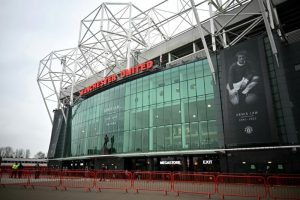
Manchester United are gearing up for a new era, with plans for a futuristic stadium designed by Norman Foster. Here’s a look at the key details of their groundbreaking project.
Joining the growing list of Europe’s top clubs upgrading their grounds, Manchester United are set to build the second-largest stadium in the world, with a revolutionary construction method. A total of 160 prefabricated pieces will be shipped from overseas and assembled like a giant Meccano set, while a vast umbrella will collect rainwater and harness energy for a future “new city” surrounding the stadium.
This vision comes from British architect Norman Foster, who is reimagining Old Trafford, known as The Theatre of Dreams. The iconic stadium, which recently marked its 115th anniversary, has shown signs of age over the years.
“One of the most exciting projects in the world today, with immense regional and national significance, begins with enhancing the fan experience,” said Foster, whose studio presented the digital models just recently. “We’re bringing supporters closer to the pitch than ever, creating a deafening roar.”
The new stadium will be encased by a huge canopy that will collect rainwater and generate energy. It will also feature a public square that’s twice the size of Trafalgar Square, and three towering flagpoles—one standing at 200 metres—symbolising the club’s Red Devils crest.
The new Old Trafford will hold more than 100,000 fans and be built on land surrounding the existing stadium as part of the wider Trafford Wharfside redevelopment. It will surpass Wembley (90,000) to become the United Kingdom’s largest stadium.
Moreover, it will become one of the world’s largest stadiums, joining the likes of the upcoming Grand Casablanca Stadium in Morocco, which will host the 2030 World Cup and hold 115,000 spectators. The project will also feature an athletics track, an indoor swimming pool, a shopping centre and a hotel.
Other major stadium upgrades include Everton’s Bramley-Moore Dock, replacing Goodison Park at the end of this season, the Etihad Stadium expansion for Manchester City, which started in 2024; Tottenham Hotspur’s new ground and Anfield’s expanded stands (Liverpool), completed in stages until 2023.
Arsenal are planning to expand the Emirates Stadium and Newcastle United are said to be considering a new build, according to local reports. Outside the United Kingdom, AC Milan and Inter Milan are planning a joint project for a new San Siro.
Key features of Norman Foster’s project
– The new stadium will increase capacity from 74,000 to over 100,000, making it the largest football stadium in Europe and the second-largest in the world, behind Pyongyang’s Rungrado 1st of May Stadium (North Korea, with more than 114,000 seats), until the Casablanca Grand Stadium is completed.
– The construction will take just five years—half the usual time—thanks to the modular Meccano-style system. The 160 prefabricated pieces will be shipped from outside the UK and assembled via the 58-kilometre-long Manchester Ship Canal.
– The project is expected to contribute £7.3 billion to the local economy, creating 92,000 jobs and 17,000 new homes. The club anticipates 1.8 million tourists annually.
– Foster envisions the stadium at the heart of a pedestrian-friendly district, with public transport links and a network of green spaces—a “new city”.
– Financing remains a mystery, with the cost of the new stadium estimated at over £2 billion. According to The Athletic, Manchester United are considering selling naming rights to help fund the project.
– Foster stressed the importance of the fan experience, bringing them closer to the pitch and creating an overwhelming acoustic atmosphere.
– The stadium will feature three flagpoles, inspired by the Red Devils’ trident, symbolising the industrial skyline of Manchester. These poles will support a translucent canopy covering the stands and protecting a large public square, double the size of Trafalgar Square. This umbrella will also capture energy and rainwater. The square, with views of the iconic Bridgewater Canal, will serve as a gathering point for fans and community events.
– The new structure will include three flagpoles, making the stadium visible from 40 kilometres away. The tallest will stand at around 200 metres.
– The future of the current Old Trafford remains uncertain, though it seems unlikely the existing stadium will remain.